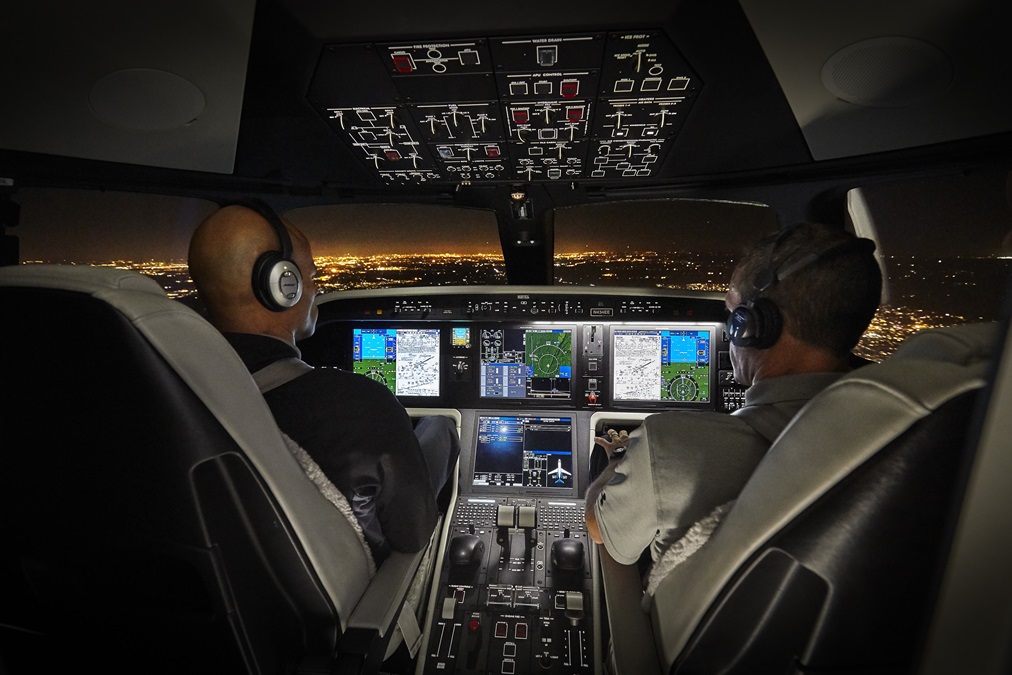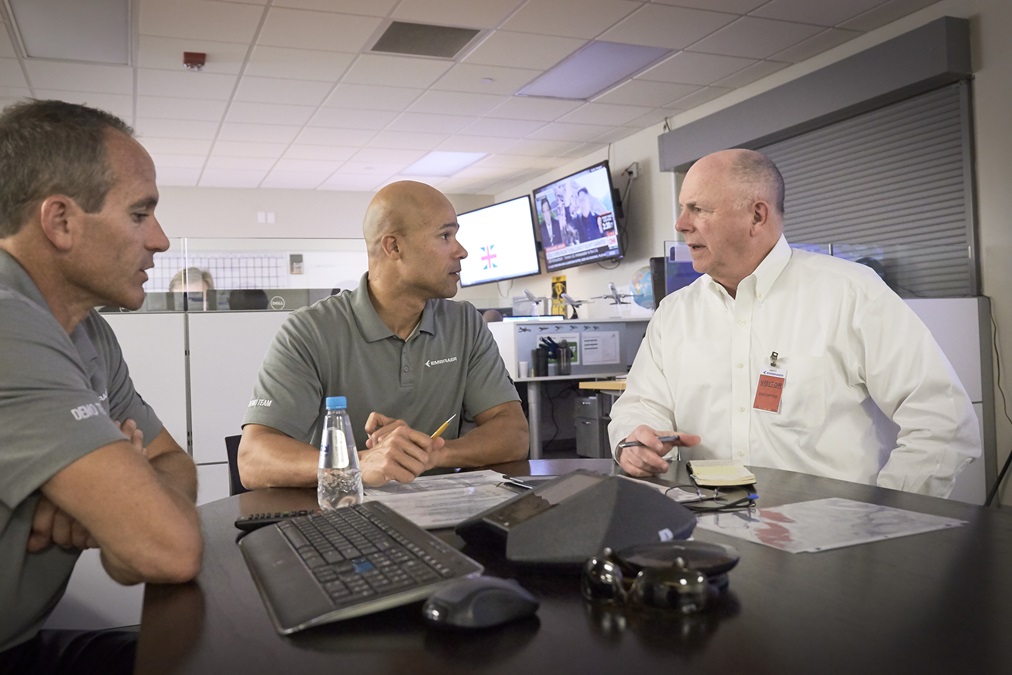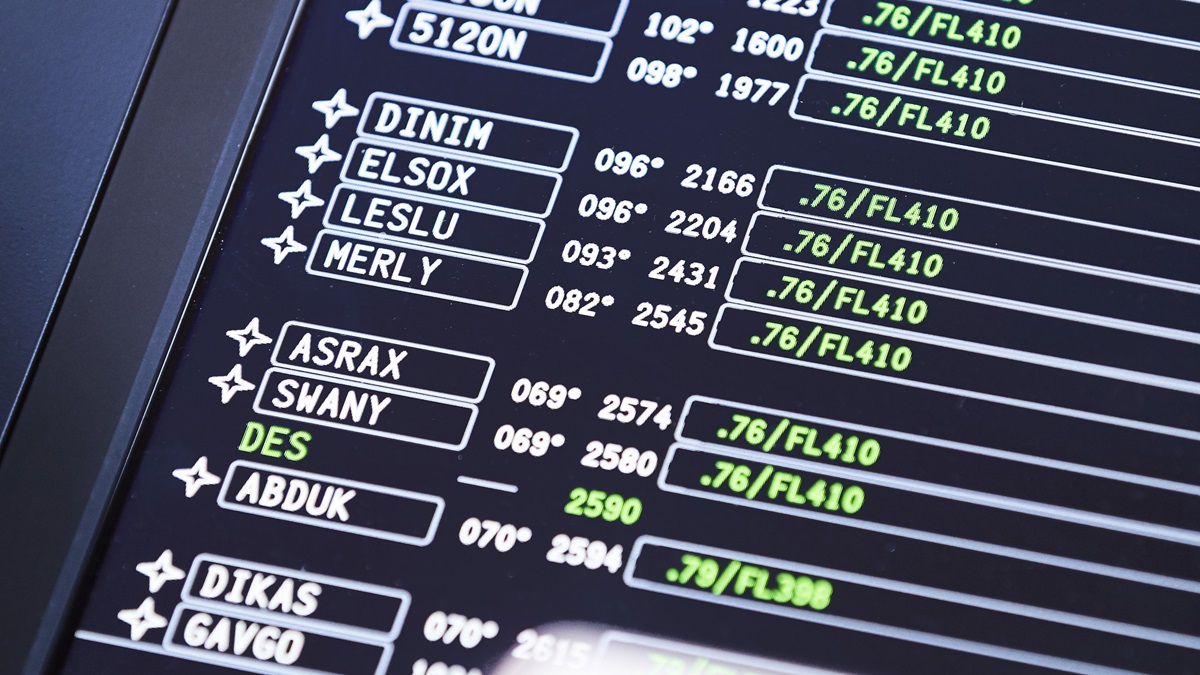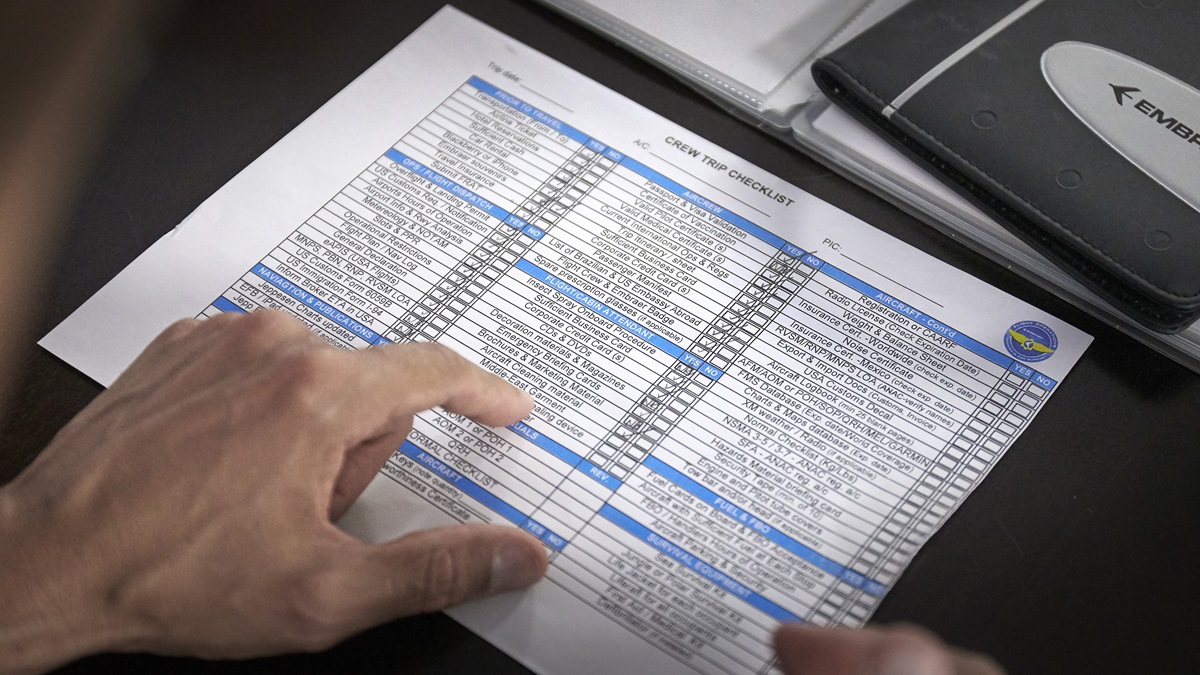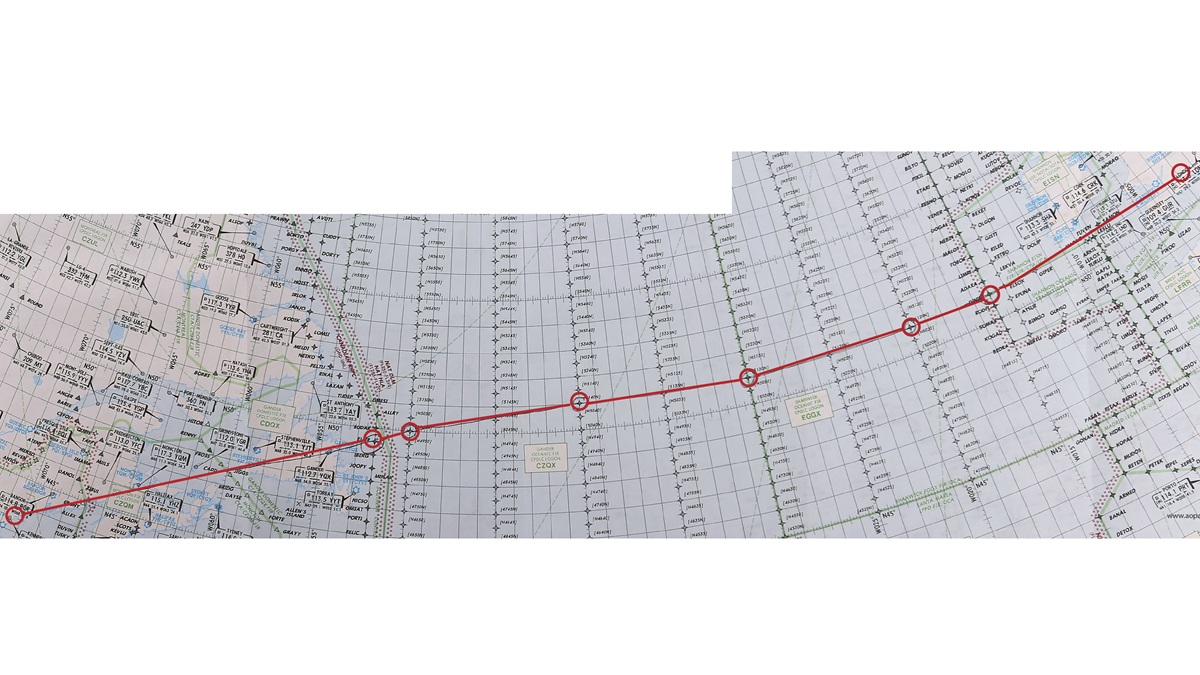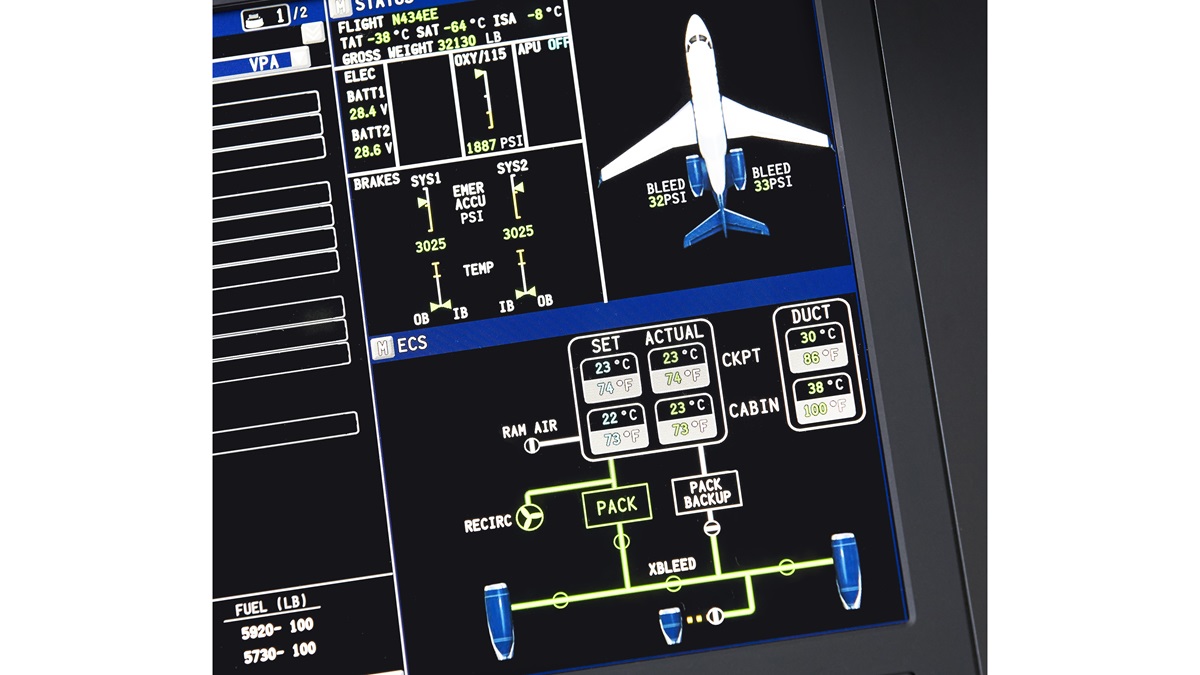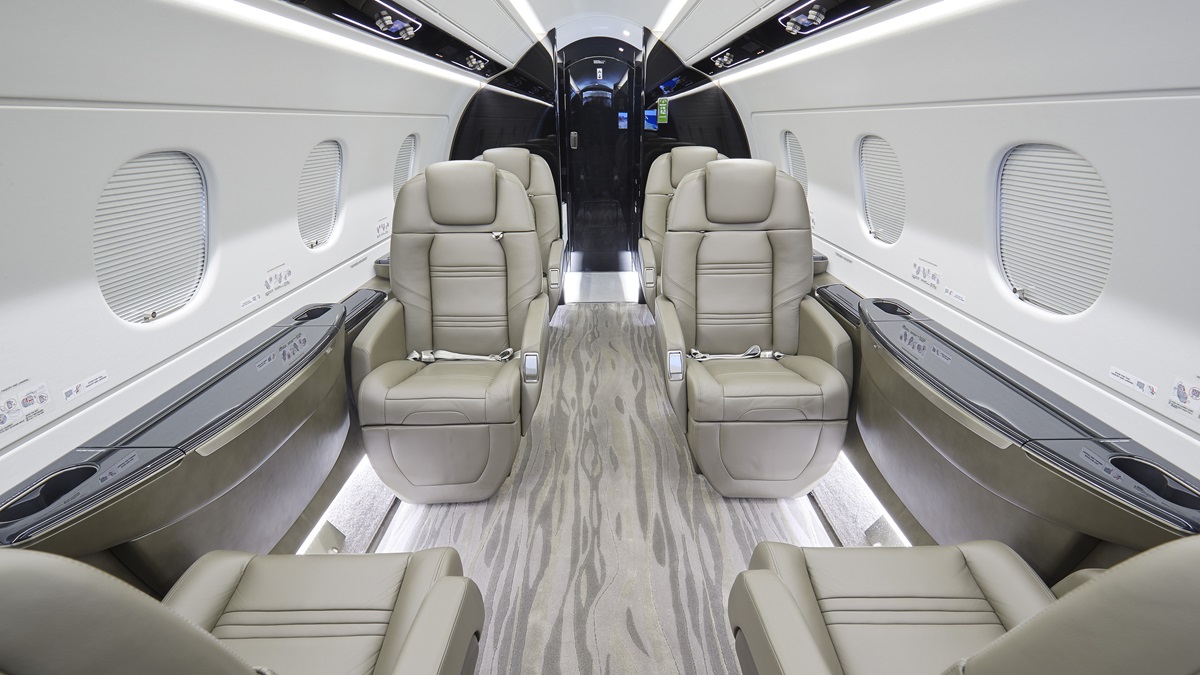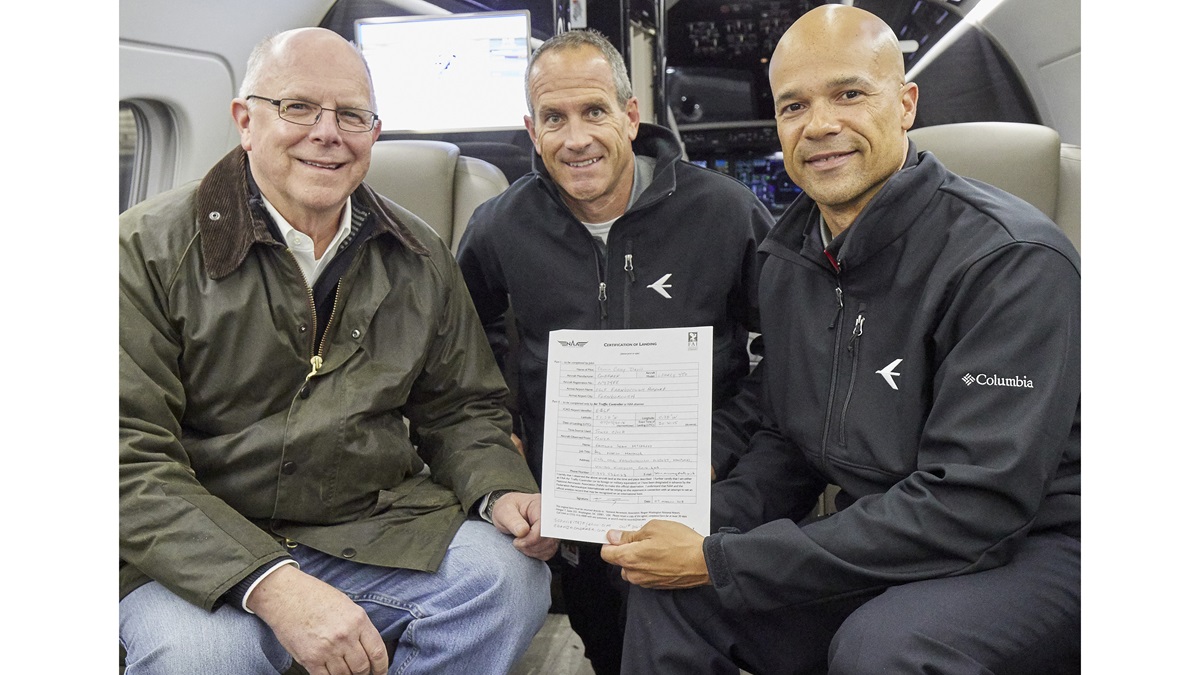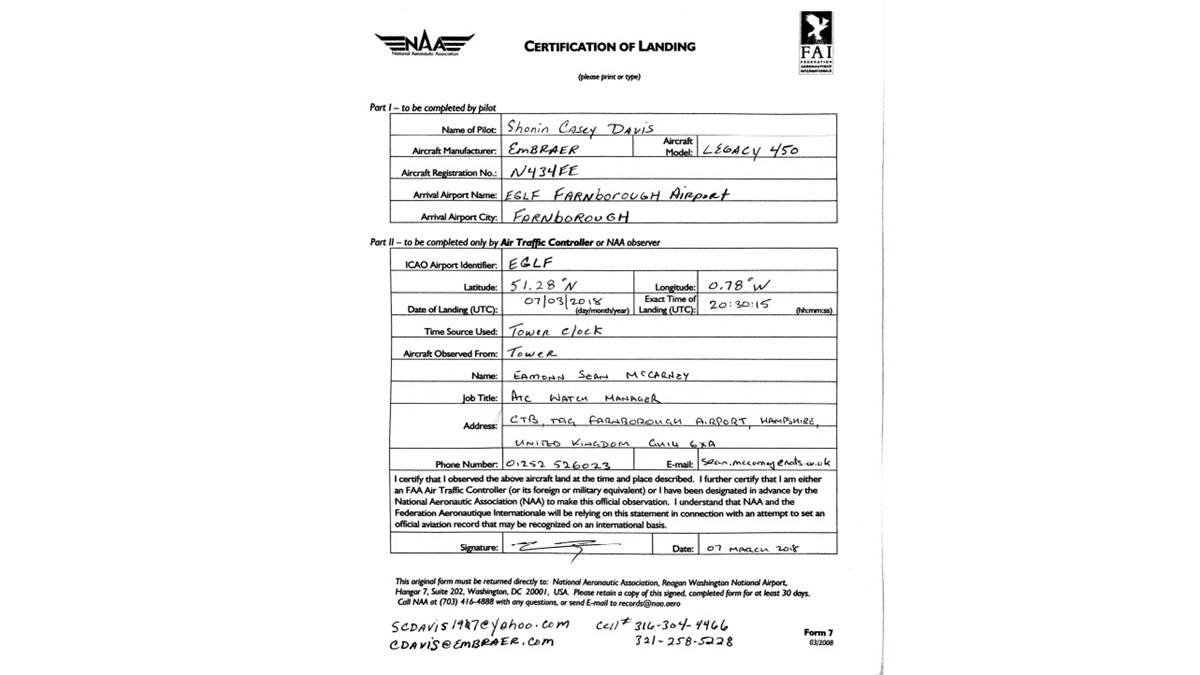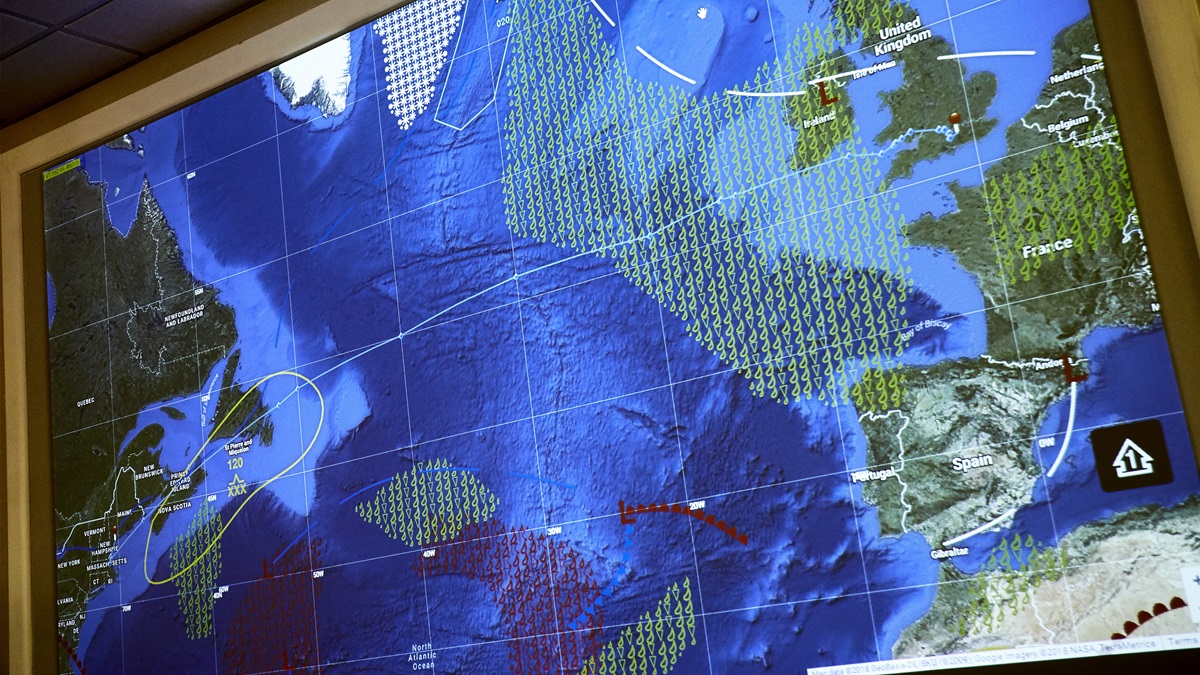Embraer Legacy 450: Factory to field
Maine to England in six hours
The chasm ended with a surprise phone call and a flurry of activity. Am I able to go on a ferry flight to deliver a Legacy 450 demonstrator to Europe? Am I a member of the National Aeronautic Association? How current was I in a Legacy 450? Yes, no, and not very were the answers. So, I joined the NAA ($50 for a “Sporting License”), which is sanctioned by the Fédération Aéronautique Internationale (FAI), the world’s aviation record-keeping organization; sent Embraer copies of my pilot and medical certificates; and went back to FlightSafety International’s St. Louis learning center for a six-hour stint in the simulator to remind me of the ins and outs of the Legacy 450/500’s Rockwell Collins Pro Line Fusion avionics (the two airplanes share a common type rating). The airplane’s easy to fly. It’s the high-end, state-of-the-art avionics that pose the real challenge, until you fly them regularly. Even so, I was surprised to see how much I remembered of the Fusion’s operating logic.
Soon enough, I was at Embraer’s Melbourne, Florida, flight operations building, looking over our trans-Atlantic route with demonstration pilots Casey Davis and Craig King, and AOPA Senior Photographer Mike Fizer. Our record would be set over a 2,762-nautical-mile course connecting the Portland, Maine, airport and Great Britain’s Farnborough Airport (EGLF) just outside London. The flight plans provided by Universal Weather and Aviation and Embraer showed an estimated time en route of five hours, 58 minutes. And, let there be no doubt, it would be a new world record.
How could we be so sure? Because Davis had searched the NAA website, looking for city pairs without any record-setting flights. Portland to Farnborough was wide open for a record, no matter how fast or slow we flew! Same deal for any city pair you feel like conquering, no matter your airplane. Former AOPA colleague Al Marsh once set a speed record in a Piper Tri-Pacer from Blythe, California, to Palm Springs.
The airplane was a brand-new Legacy 450—total time 15 hours—straight from the Embraer factory in Brazil. I took its left seat for the positioning flight from Melbourne to Portland. A couple of button pushes and the APU powers up the ship. We went through the flight management system’s flight plan pages for the Initial, Takeoff, VNAV Thrust, and Departure pages and filled in the necessary information for all of them. You do this by entering the data with the pedestal-mounted keypad and trackball, scooting from field to field, then clicking on your choices. Press the Route key to manually enter your flight plan’s waypoints—or have it automatically downloaded by datalink from Universal. Weight and balance? All that information is automatically calculated, along with V-speeds, when you enter passenger and cargo weights; fuel weight is automatically sensed. The Fusion even creates a center of gravity envelope graphic to show you your exact center of gravity position at any time during a flight. After systems checks, I was ready to launch.
We weighed 34,640 pounds for takeoff (maximum takeoff weight is 35,758 pounds), but you wouldn’t know it when the autothrottles kick in and you start roaring down the runway. And here’s just one great thing about the fly-by-wire system used in the Legacy 450 and 500: No matter what your weight or center of gravity, the stick forces for liftoff and climbout are always the same.
I was accustomed to using manually selected speeds for climbs, descents, and level-offs, but Davis urged using FMS-generated speed commands. You have to takeoff in manual speed mode, but once at 400 feet agl, you can turn on the autopilot and select FMS speeds. That’s when the automation takes over. We’d selected a climb speed of 250 knots, increasing to 280 knots at 10,000 feet, and sure enough, when we passed 10,000 the autothrottles bumped up the power.
We climbed directly to FL390, then leveled off to burn some fuel so we could go to our final, FL450 cruise altitude. Up there, it was a smooth ride as we looked down on the tops of a nor’easter The Weather Channel dubbed “Riley.” By the time we flew over Salisbury, Maryland, we were doing Mach 0.734, which translated into 197 KIAS at that altitude—where redline that day was 223 KIAS. As we descended into Portland, the FMS speeds once more kicked in as the flaps were incrementally extended, to match the approach profile to the ILS serving Runway 11. At decision height I clicked off the autopilot and let the autothrottles keep the 111-knot VAPP (approach) speed. At the 50-foot call, the autothrottles went to idle thrust, then it was a slight pitch adjustment to hold an 111-knot VREF, and a slight flare for the touchdown, which was pretty good, if I must say so myself. The autobrakes, set at Medium, slowed us in style. It took us a mere two hours, 45 minutes from takeoff to touchdown. In short order all of us were in the hotel, facing The Big Day ahead.
Davis started by making sure Portland tower had the proper form to record our takeoff time. He even gave them a stamped, addressed envelope so they could send the form back to the NAA. After an especially thorough review of the usual preflight checks, Davis and King took to the cockpit. King was new to ocean crossings. This was to be a hands-on training session for him, so he took the right seat and Davis the left. Fizer and I manned the cabin.
After takeoff we flew to the ELSIR intersection, located just east of the coast of Newfoundland. There, we called Gander control and received our oceanic clearance—a pathway that had us following 51 degrees North latitude at FL410, passing over four waypoints defined by latitude and longitude, going through Gander and Shanwick airspace, and finally entering Shannon airspace at the DINIM intersection. From there, it was 11 more waypoints and on to Farnborough. While not a great circle route, we’d be flying above most of the North Atlantic tracks used by the airlines, and certainly above any weather.
King and Davis pulled out their trays from the subpanel, and then came an anachronism: King plotted the waypoints on a paper chart. After he plotted them, Davis verified the coordinates, and then check marks were made next to them. This meant both pilots had concurred about the plot. As we flew along, and position reports were made over each waypoint, a circle was put around each waypoint. This meant that a position report had been made. An X mark through the circle meant that both agreed a waypoint was passed. Sure, the Fusion’s FMS had the same waypoints in it, but this was a way of backing up the digital data in case the GPS nav sources gave up the ghost.
Coming up on DINIM intersection, the cloud tops below assumed a reddish tint, giving a hint of the sunset to come. When it came, it was rather sudden. Then again, we had been traveling toward that sunset at some 500 knots, thanks to consistent headwinds and a 450-knot true airspeed.
The descent in the darkness brought out the first city lights, with Milford Haven, Swansea, and Cardiff lighting up the Welsh countryside. Then Bristol and Newbury as we drew nearer to Farnborough. Word was sent ahead to Farnborough tower, reminding them to mark the time our wheels touched down. Then it was vectors to the ILS Runway 24 approach, and a touchdown at exactly 2030:15 UTC (which is also local time). We’d done it. Our flight time was a record-setting (of course) six hours, five minutes, in which we’d covered 2,593 nm.
At the Embraer hangar, customs, immigration and handling personnel were waiting as we popped open the cabin door. “Well done!” came a small chorus. Then it was passports, export certificate, and other formalities—including a form to be sent to the tower for their certification of the arrival time.
I’m told that in a few months the results should be finalized and the award plaques made ready. By the time you read this you may be able to look up the flight on the NAA website. Check for a March 7, 2018, flight of an EMB-545 registered as N434EE, flown from KPWM to EGLF. Meanwhile, as a designated crewmember I’ll eagerly await my plaque, which will probably be awarded during this year’s NBAA convention—back where all this was first set in motion, exactly one year earlier.
Email [email protected]

